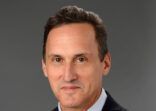Lansonneur, who leads the investment products team for the consumer banking group, including private banking, said fixed income products remain in high demand due to the low interest rate environment.
In Singapore, clients are investing in guaranteed income products, which he describes as income-generating funds mainly invested in fixed income with some allocation to high yield stocks.
“Pure equity funds are still lagging behind and sectorial funds in Singapore are not that popular,” he told FSA.
Despite the 2017 US interest rate hikes, fixed income flows and performance have generally remained robust. The Singapore mutual fund fixed income sector is up 15.8% over the last three years in US dollar terms and 5.8% over the last year, according to FE data.
“For wealth clients, we have noticed a switch from single bond investments into active fixed income funds. In the current context of rising rates, floating rate funds have also been very successful. For retail clients, fixed income funds are more popular.
“When you look at this asset class, it has been performing relatively well. But with the overall risk premium and the yield coming down, we can’t have too much concentration in our clients’ portfolios and have been advocating for more diversification,” Lansonneur said.
A push for alts
Exposure to alternatives can diversify portfolios from fixed income exposure, he believes. In terms of alternatives, he mentioned that DBS has distribution exclusivity (along with UBS) for a real estate private equity product with Singapore-based Mapletree, a property development and investment firm. Last February, the bank also invested in Mapletree’s student housing portfolio in the US and the UK.
“Our wealth clients should have exposure to alternatives in their portfolio. That is something we have been advising and are implementing in our asset allocation strategies,” Lansonneur said.
“In a context where you now have to be extremely careful about the valuation of equity and fixed income markets, you need to hold investments that could weather potential market corrections. Ucits liquid alts, private equity and hedge funds can provide these benefits.”
Hedge fund exposure, he said, is useful in client portfolios. But due to past poor performance and lack of transparency, hedge funds “still scare people away”, he said.
He added that clients have not embraced alternatives. The advised portfolio allocation to alts is 5%-10%, he said.
“To tell you the truth, we are not at this number yet. But it is something that we are trying to achieve. We are making efforts to educate the clients. Their main worry is the lower liquidity of [most of] these investments.
Fund selection process
The AUM of DBS’ advisory versus discretionary business in Asia is “in line with the Asian industry average – which is much further below European levels”, Lansonneur said. “We believe Asia will narrow the gap, and we are looking at doubling [discretionary] AUM – at the minimum – within three years.”
Lansonneur leads a team of specialists who cover equity, fixed income and foreign exchange products and work with the chief investment officer. The DBS fund selection team has eight people and they use an open architecture model, he said.
DBS actively follows about 200 funds. Less than 100 are eventually selected as “top rated” by the fund selection team, he said. Each quarter, a focus list is published that has two-three recommended funds for each asset class.
To choose funds, the first step is quantitative screening for several factors, including performance and liquidity. Qualitative analysis is also applied. For example, the team looks at the fund manager’s track record and whether the manager invests in his own fund.
“Knowing which fund managers or fund houses have policies where they invest in their own funds, either voluntarily, or via bonuses or retainers, is valuable information to have in the selection process. However, it’s not a prerequisite per se.”
He added that client servicing was also important and the expectation is that partnerships with fund houses go “well beyond simple distribution of products”.
“Besides technical and marketing support our funds house partners have been providing us, we value their insights on local and regional regulatory changes and scenarios.”
Once the funds have been selected, they are reviewed every six months and funds which do not meet their expectations across a variety of indicators are cut.
When clients choose a fund, they are still attracted by the familiar brand names. But, he explains to clients, the big brand names cannot be good at everything.
















